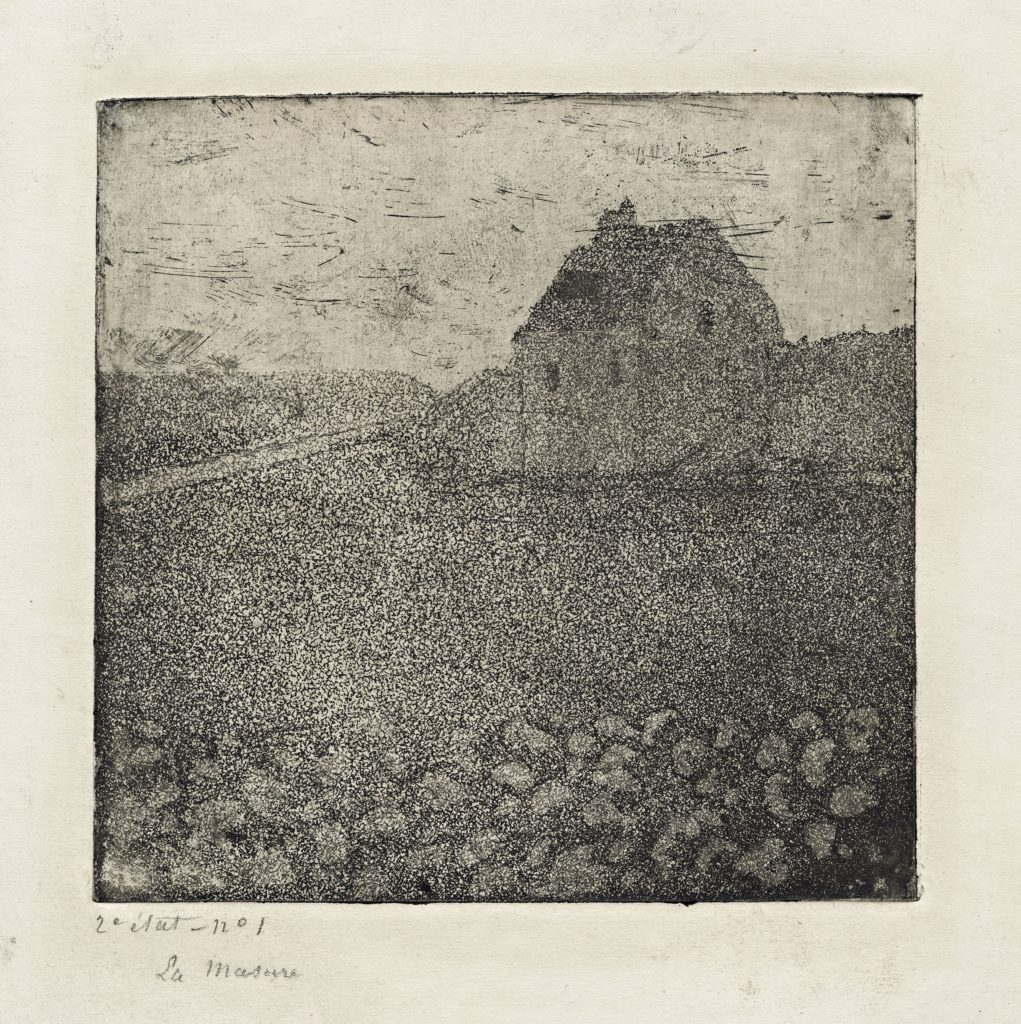La Masure
The Old Cottage
Etching, aquatint and soft ground on wove paper, 1879
Entitled and inscribed lower left in the margin with pencil 2e état – n°1 / La Masure
Size
167 × 170 mm
Provenance
Private collection, France
Literature
Barbara S. Shapiro, Camille Pissarro, The Impressionist Printmaker, 1973, cat. 13-14 (states 4 and 7 ill.); Anne Röver (ed.), Camille Pissarro. Radierungen, Lithographien, Monotypien aus deutschen une österreichischen Sammlungen, 1991, cat. 8 (states 3 and 4 ill.)
Exhibition
“One can be simple, natural and yet very expressive!”[1]
This is a superb proof of the second state in almost pure aquatint, existing in only two exemplars, numbered by the artist, and one of the most famous landscapes by Camille Pissarro as a printmaker. In a certain way, this aquatint is a rare, typical and stunning example of the quintessence of the impressionist print, as set by Degas and Pissarro in 1879 when they were very close, working together to the project of Le Jour et la Nuit, and experimenting a lot about techniques and inking. This was a key moment in the history of printmaking.
There are only two impressions of the first state. On the second state, Camille Pissarro added only a few etched lines to the aquatint, on the house and in the sky. Carefully printed with plate-tone, this second state creates a highly decorative surface pattern, and reflects the extraordinary equilibrium that the artist was able to achieve between light, dark and texture. As in a few other landscapes of that period, he created these early states primarily using a variety of aquatint tones, which were clarified in successive states by additional etched lines, here to delicately delineate the cottage, the sky and the landscape. The only other second state impression of La Masure is at the Van Gogh Museum in Amsterdam.
Pissarro presented three different states of this print at the Cinquième exposition impressionniste in 1880, which proves that he was very interested in these variations. There are seven states in total. The delicacy of the early aquatint disappeared with the later states, the atmospheric light was sharply reduced with the addition of coarser aquatint grains and etched lines all over the plate.
It is evident that Pissarro studied Japanese woodcuts prints by Ukiyo-e [“floating world”] artists, and especially Hiroshige and Hokusai prints. In the first states, he designed a very intriguing image where the house is the only presence in an almost abstract Nature. This is a shimmering balance between the recognizable and the illusionistic.
[1] Camille Pissarro : Letters to His Son Lucien, 1943, p. 352.
Reference
Delteil 20, 2nd state of 7






